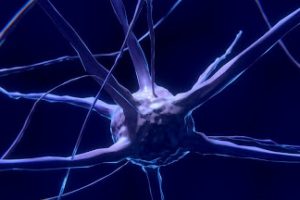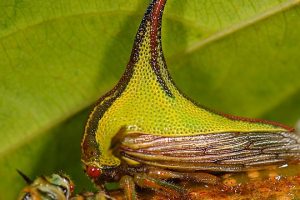
© Shutterstock
_________________________________________________________________
Kholood Tahir Munir – UK
Say, `Who provides sustenance for you from the heaven or the earth? Or who is it that has power over the ears and the eyes? And who brings forth the living from the dead and brings forth the dead from the living? And who regulates all affairs? They will say, `ALLAH.’ Then say, `Will you not seek HIS protection?’ [1]
A couple of years ago, I attended a summer school at Bristol University and had the opportunity to participate in a session in their Veterinary Dissection Rooms. They had created stations in which they had laid out an array of visceral organs, and it was our job to match the organ to the animal it belonged to. After having donned a disposable head covering, an oversized lab coat, goggles, gloves and even disposable shoe covers, I distinctly remember approaching my first station to see the selection of brains laid out on one of the metal tables in the dissection room. It was awe-inspiring to see the brains of various animals; they were all so different in terms of size, ranging from as small as an almond to as big as a football, but also so similar in terms of shape, structure and colours. My fascination increased exponentially that day as I examined the bones, hearts, lungs, livers and kidneys of various animals including rats, rabbits, dogs, sheep and horses. By the end of the day, I was left at a loss of words to have had the privilege to see, up so close, the variations in the remarkable designs of God’s creations. I was left inspired to learn about anatomy and physiology in greater detail, especially that of the human body.
Professor Abdus Salam, the first Muslim to receive a Nobel Prize in Science, once wrote: ‘The Holy Qur’an enjoins us to reflect on the verities of Allah’s created laws of nature; however, that our generation has been privileged to glimpse a part of His design is a bounty and a grace for which I render thanks with a humble heart.‘ [2]
It was with similar sentiments I stepped into the Dissecting Rooms in the Hodgkin Building of Guy’s Campus for the first time. The structured teaching sessions usually took place at another time, but my friend and I booked an independent learning session at a much quieter time, and we were the only few people there. I remember looking around, breathing in and smelling the eerie air, and instantly getting the shivers. The room as far as I could see, was lined with endless metallic tables which each had parts of the human body for us to study, covered by once white – now yellowed and creamy coloured soiled – sheets. Every surface and shelf of the room was adorned with various preserved specimens, outdated and overly used anatomy textbooks and other objects of interest all scattered around. One of the staff members took us to an area in the great big room and one by one lifted the sheets off the cadavers underneath. She spoke a few words, presumably telling us where everything was and what to do if we have any questions, but I had stopped hearing, for all my attention had been turned to what she had uncovered in front of us.

For the first part of it, I think the intensity of the whole situation left us quite speechless. For a very long time, we slowly processed and cautiously touched what we were seeing, often murmuring our observations, drawing from any knowledge we had previously acquired from lectures or textbooks. The region of the human body we had chosen to study that day was the shoulder and arm region. We were given two cadavers to study; one of which was the top half of a body cut at the transverse plane and the internal organs had been removed to give us access to what was beneath; the second of which was a section of the bones and muscles of the shoulder and arm region, the fat and skin layers had been removed to give us better access. Identifying the humerus, scapula, clavicle, radius and ulna were easy but it got more difficult to identify the different veins, arteries, nerves and muscles due to how complicated and intertwined all the structures were and the fact that they were all in similar shades of peaches, pinks and reds. Eventually, with the help of the staff member, we were able to gauge an understanding of all the different structures including the all-important brachial plexus, the network of nerves in the shoulder region which is responsible for innervating the arm and hand, wholly aware that this was but a dip of a toe in a vast and endless pool of water. For the rest of the year, we delved into other regions of the human body, starting off with the upper and lower limbs, then moving onto the back and thorax regions and ending with the abdomen and pelvic regions.
It is both a scary and humbling feeling being face to face with a dead body. You cannot help but think that this was once a living, breathing and feeling entity, that the hands that lie there so lifeless and limp, would once squeeze and be full of warmth; that the chest wall you just gently pulled the lungs out of, would once rise and fall; that the face with features so humane yet expressions anything but, would once laugh and smile. It puts into perspective how powerless we all are in the face of death and how insignificant this life is compared to the one that is yet to come, indeed it is only God who is All-Powerful.
As early as our first anatomy lecture of Medical School, a huge emphasis is made on the sacrifice of the volunteers who donate their body to science and go under the knife as a service to the medical world. As medical students, it is our responsibility to honour their gifts to science and treat their bodies with respect and dignity. There is a Hadith of the Holy Prophet (sa); ‘Speak not ill of the dead or you will cause pain to the living,’ [3] and to me, this emphasises the utmost respect, care and humility one must adopt whilst studying the human body through dissections. In the Holy Qur’an, God tells us that, ‘Whoso saved a life, it shall be as if he had saved the life of all mankind,‘ [4] and in the history of medical science, human dissections have played a key role in the understanding of human anatomy and thus contributing to better medical care. The discipline of anatomy, while providing the fundamental knowledge of the structure of the human body, also underpins the study of physiology and pathology as well as clinical medicine, surgery and radiology, to name but a few. To study human anatomy in such a way is a unique opportunity and an immense privilege, one which I will forever be grateful to God, for granting me the opportunity to witness His Majesty and Grandeur in such a way.
Reflecting on the past few years, it is amusing to me that when we are faced with a challenge or obstacle, we regard it as the hardest thing in the world, however, in hindsight when that obstacle has passed, we think back to how much simpler it all was back then. Studying science at GCSE and A-Level, although it was a challenge at the time, the concepts were basic, often diagrams and notes in textbooks would be colour coded and if you used the CGP revision guides, you would even be rewarded with a joke at the bottom of each page! The textbooks at university unfortunately never have any jokes, probably because they need that space for nearly fifty times the level of detail they delve into; however, learning anatomy hands-on in the dissection room has no comparison to either. When you see the structures in real life you realise that they only hold a semblance to the diagrams and textbook images you have previously spent hours studying. When you feel the textures – the toughness of skin, the bounciness of the arteries, the rigidness of the tendons, the hardness of bones, the smooth yet tough muscles,– you realise that the 2D almost cartoon-like diagrams you’ve been imagining in your head are in fact real, physical and tangible structures. You realise that all the science you’ve learnt in school up to this point is not just a thing of textbooks and exam papers, it is real life. This is something I am looking forward to appreciating even further, when I begin my clinical years in September and get the opportunity to see the presentations of the illnesses and diseases I’ve been learning, in real patients through my GP and hospital placements, inshAllah.
In the past year alone, I can recall numerous moments I had to take a step back from the dissection table or close my book for a moment and just say, ‘Wow, SubhanAllah!’ From holding a real human heart and a real human brain in my bare hands, to discovering that the spinal cord, the structure responsible for the transmission of nerve impulses from the brain to the rest of the body, is just 1-1.5 cm in diameter – so thin and fragile to what I had previously envisioned from large zoomed-in diagrams in textbooks. From learning that the oesophagus and stomach are mere sacs and flimsy membranes in comparison to the strong and rigid structure of the liver, and as a result not being able to eat for the rest of the day – visualising every morsel of my dinner going down my poor oesophagus, the narrowness of which I had not previously imagined -, to the fact that there are 30 trillion cells in the human body all hard at work, all at the same time – everything I have learnt has only led me to believe more and more in a Divine Designer.
The human body is designed to such complexity and intricacy that even if a man dedicated his whole life to try to understand it all, it would still not be possible. The highest level of medical training in the UK is consultancy, which only deems someone a specialist in one area, never all. Similarly, a doctorate, the highest level of degree that can be awarded, is always in a single topic or subject, never all. Amongst my peers and perhaps if you ask any medical student, biochemistry is considered the bane of our lives; to think of the number of hours we dedicate to understanding and memorising pathways such as the clotting cascade or the Krebs cycle, only to forget them every single time and then having to go through the same process again to understand and memorise them again for the next exam. Indeed, only God is All-Knowing; humans are weak, and the human brain does not and will never have the capacity to fully understand and comprehend the complex and intricate designs of God’s creations.
The Holy Qur’an says: ‘No incongruity canst thou see in the creation of the Gracious God. Then look again; Seest thou any flaw? Aye, look again and yet again, your sight will only return to you frustrated and fatigued.’ [5] In my pursuit of knowledge of medicine and the human body, one of God’s remarkable designs, though I may become frustrated and though I may become fatigued trying to understand it, I know that I will never ever tire of appreciating and admiring the flawless designs of God’s Creations. Every cell, every tissue, every organ of the human body is made so perfectly to suit its function, to allow us to breathe, to live, to think, to feel and then also produce life that can do the same – Glory be to the Most High! The more I learn and delve into it, with every lecture, workshop, practical, tutorial and dissection, the more in awe I become of the Designer, the Almighty, the Creator, the Wise.
‘Which, then, of the favours of your Lord will you twain deny?‘ [6]
ENDNOTES
- The Holy Qur’an: Chapter 10, Verse 32
- The Nobel Prize Website: https://www.nobelprize.org/prizes/physics/1979/salam/biographical/ (Date accessed: 4/7/21)
- Hadith: Sunan al-Tirmidhī
- The Holy Qur’an: Chapter 5, Verse 33
- The Holy Qur’an: Chapter 67, Verse 5
- The Holy Qur’an: Chapter 55, Verse 14




Add Comment